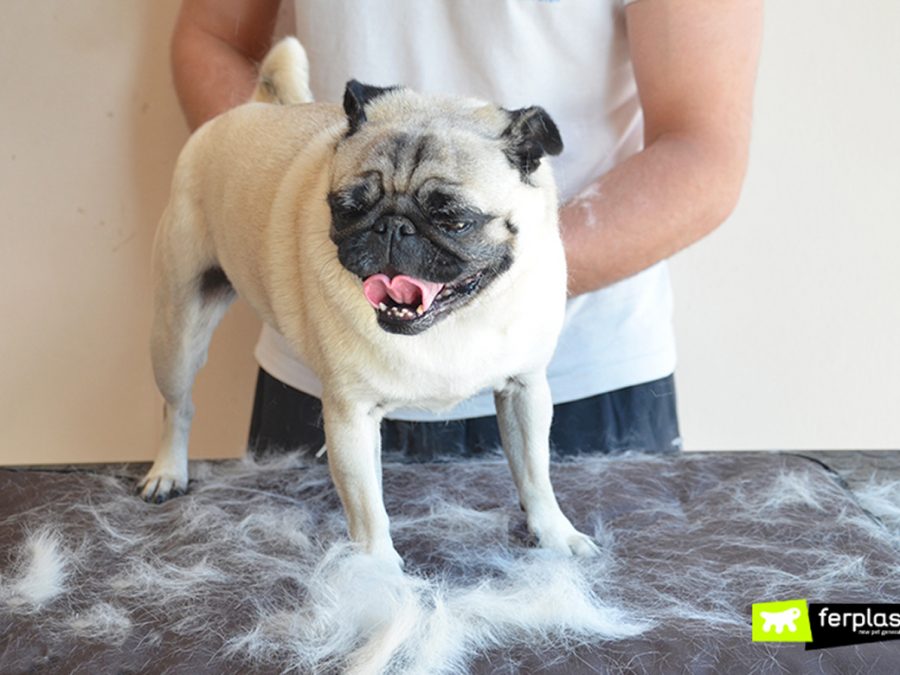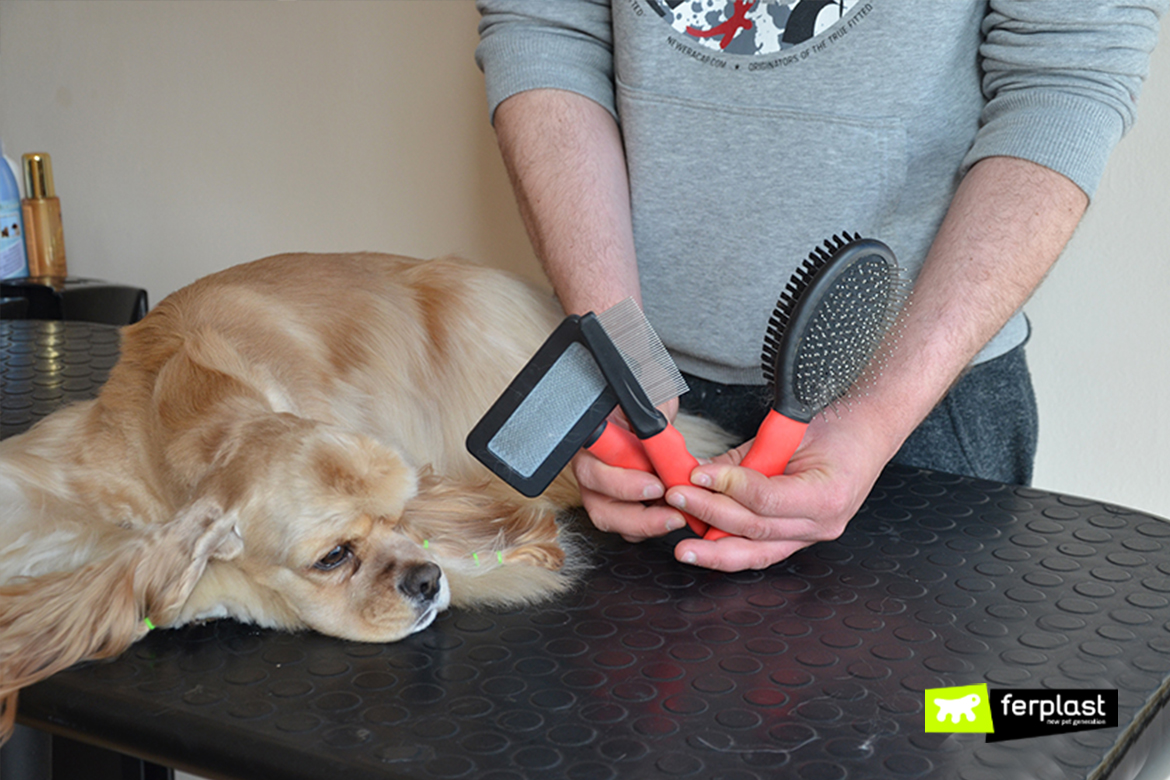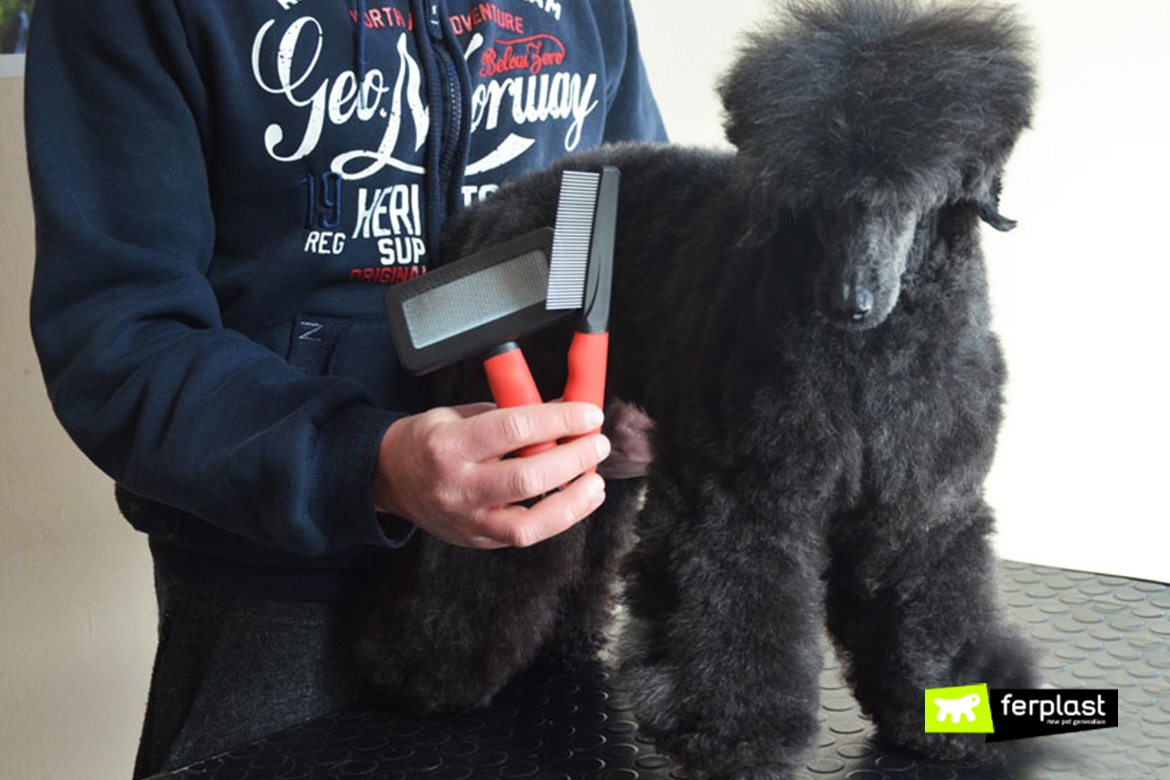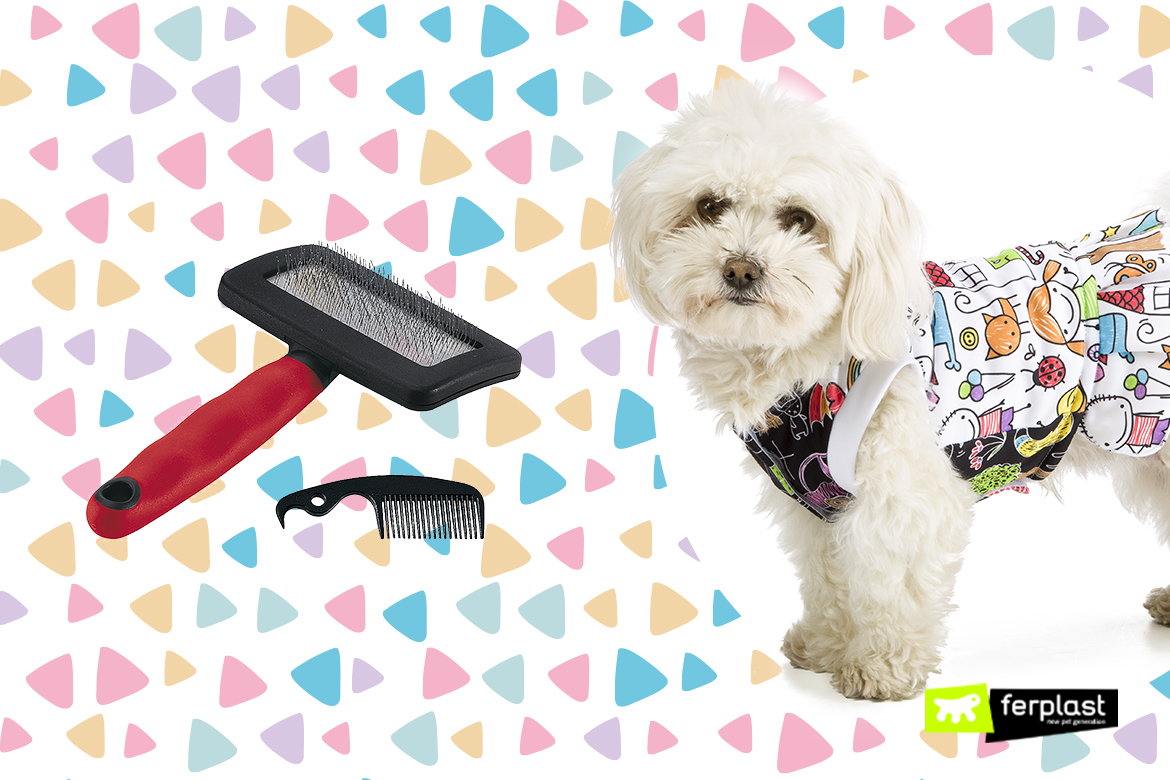Dogs shed fur according to the length of their coat and to whether they live outdoors or not. It’s a natural phenomenon, but it can also have other causes. Here are the most common reasons why dogs shed.
1) BLOWING THEIR COATS. Nature dictates that dogs blow their coats twice a year. When this is the reason why a dog is shedding, it is uniform and takes place when the weather turns cold or when summer starts. Old or damaged hair is shed to leave space for new. In autumn hair is longer and thicker, whereas the summer coat is shorter and less dense. It’s important to brush your dog every day to remove the shed hair so as to avoid knots, help the skin breathe, and remove dead skin cells.
2) A POOR DIET. Another cause for alopecia could be linked to a nutritional deficiency. To avoid shedding hair, your dog’s diet must be balanced and precise, rich in polyunsaturated fatty acids and with added vitamins, omega 3 and amino acids which help soothe inflamed skin and keep the coat beautiful, healthy and shiny.
3) ALLERGIES. Allergies are another possible cause for hair loss. They can be triggered by environmental factors such as pollen, mould or dust mites, or by parasites such as fleas or lice. Food allergies should not be underestimated; they cause irritating itches that the dog tries to solve by repeatedly, compulsively, scratching until blotches appear on the skin.
4) STRESS. Dogs can also suffer stress caused by specific traumas or general nervousness. The most immediate and visible reaction is losing their hair in different areas. This is the hardest cause to treat and there are no cures other than plenty of patience and giving your dog lots of attention, petting it, taking it for walks and playing with it. Sometimes hormones can lead pregnant bitches to lose their hair.
The treatment for your dog’s hair loss varies according to the cause of the problem. Every case requires a different and targeted approach, but a good groom can prevent dermatitis setting in. The dog’s skin should be kept hydrated, so regular baths are necessary. It is also important to use the right tools for the dog’s type of coat. Brushes with bristles are best suited for dogs with short and smooth hair, whereas a wire-pin brush should be used for medium-length or curly coat and a comb for breeds with long hair and a thick undercoat.






